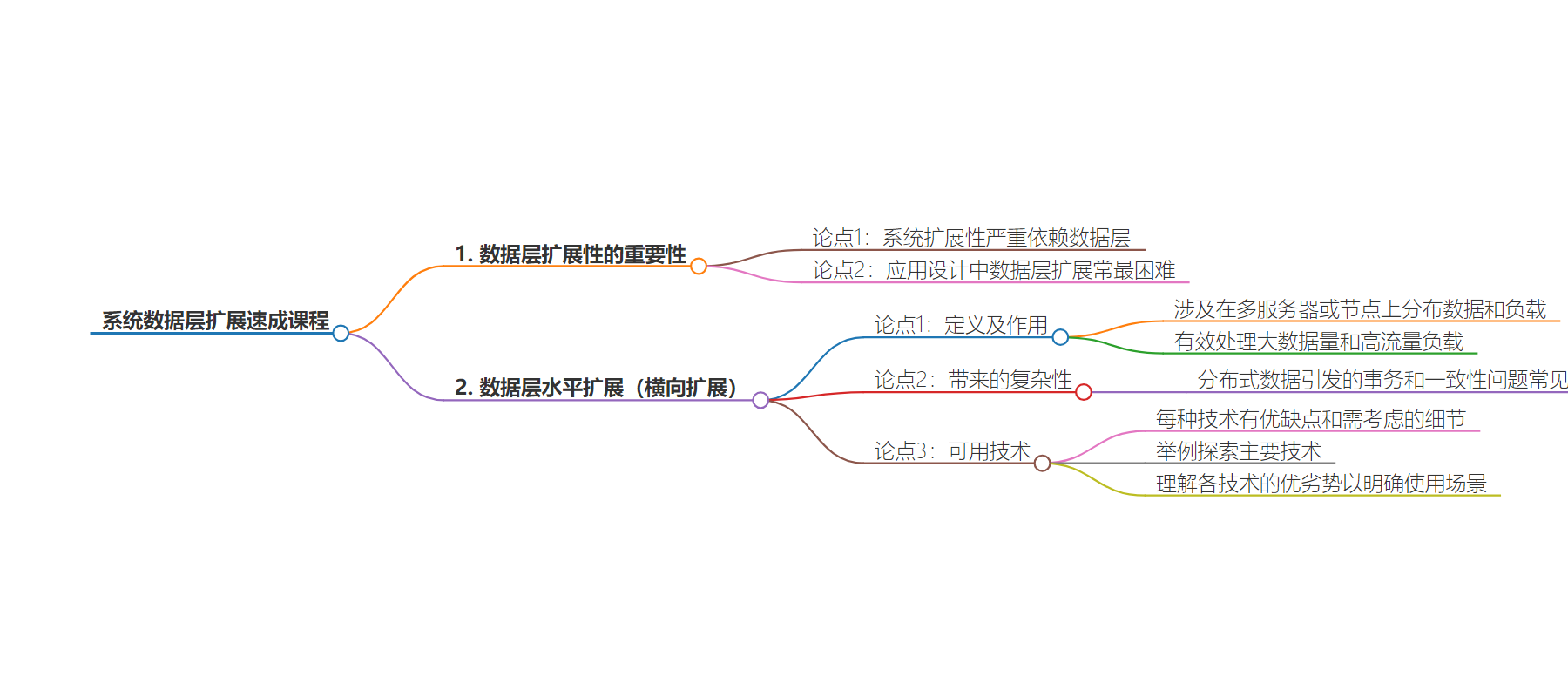包阅导读总结
1. 关键词:`Data Layer、Scalability、Horizontally Scaling、Techniques、Transactions`
2. 总结:系统的可扩展性很大程度取决于数据层,应用的数据层水平扩展能应对大量数据和高流量,但增加了复杂性,文中将探讨水平扩展数据层的主要技术及各自优缺点。
3. 主要内容:
– 系统可扩展性重点在数据层,其可扩展性限制整体,且扩展数据层常是应用设计中最难任务
– 应用数据层水平扩展即“横向扩展”,通过跨多服务器或节点分布数据和负载来处理大数据量和高流量,但带来了更多复杂性,分布式数据产生了单体数据库中不存在的事务和一致性问题
– 存在多种水平扩展数据层的技术,各有优劣和特定细节值得考虑
– 本文将探索主要的水平扩展技术及举例,理解各自优缺点,以明确何时使用特定方法
思维导图:
文章地址:https://blog.bytebytego.com/p/a-crash-course-on-scaling-the-data
文章来源:blog.bytebytego.com
作者:ByteByteGo
发布时间:2024/9/5 15:30
语言:英文
总字数:181字
预计阅读时间:1分钟
评分:86分
标签:数据层扩展,水平扩展,数据库管理,系统可扩展性,应用设计
以下为原文内容
本内容来源于用户推荐转载,旨在分享知识与观点,如有侵权请联系删除 联系邮箱 media@ilingban.com
The scalability of a system is heavily dependent on the data layer.
No matter how much effort is made to scale the API or the application layer, it is limited by the scalability of the data layer. Also, scaling the data layer is often the most difficult task during application design.
Horizontally scaling the data layer of an application, also known as “scaling out”, involves distributing the data and load across multiple servers or nodes.
This approach is particularly effective for handling large volumes of data and high traffic loads, but it also adds multiple orders of complexity. Since the data is distributed, many issues regarding transactions and consistency that don’t appear in monolithic databases become quite common.
Several techniques are available for horizontally scaling the data layer, each having pros and cons with specific nuances worth considering.
In this post, we’ll explore the major techniques for scaling the data layer horizontally along with examples. Also, we will understand the advantages and disadvantages of each technique to get a better idea of when to use a particular approach over another choice.
